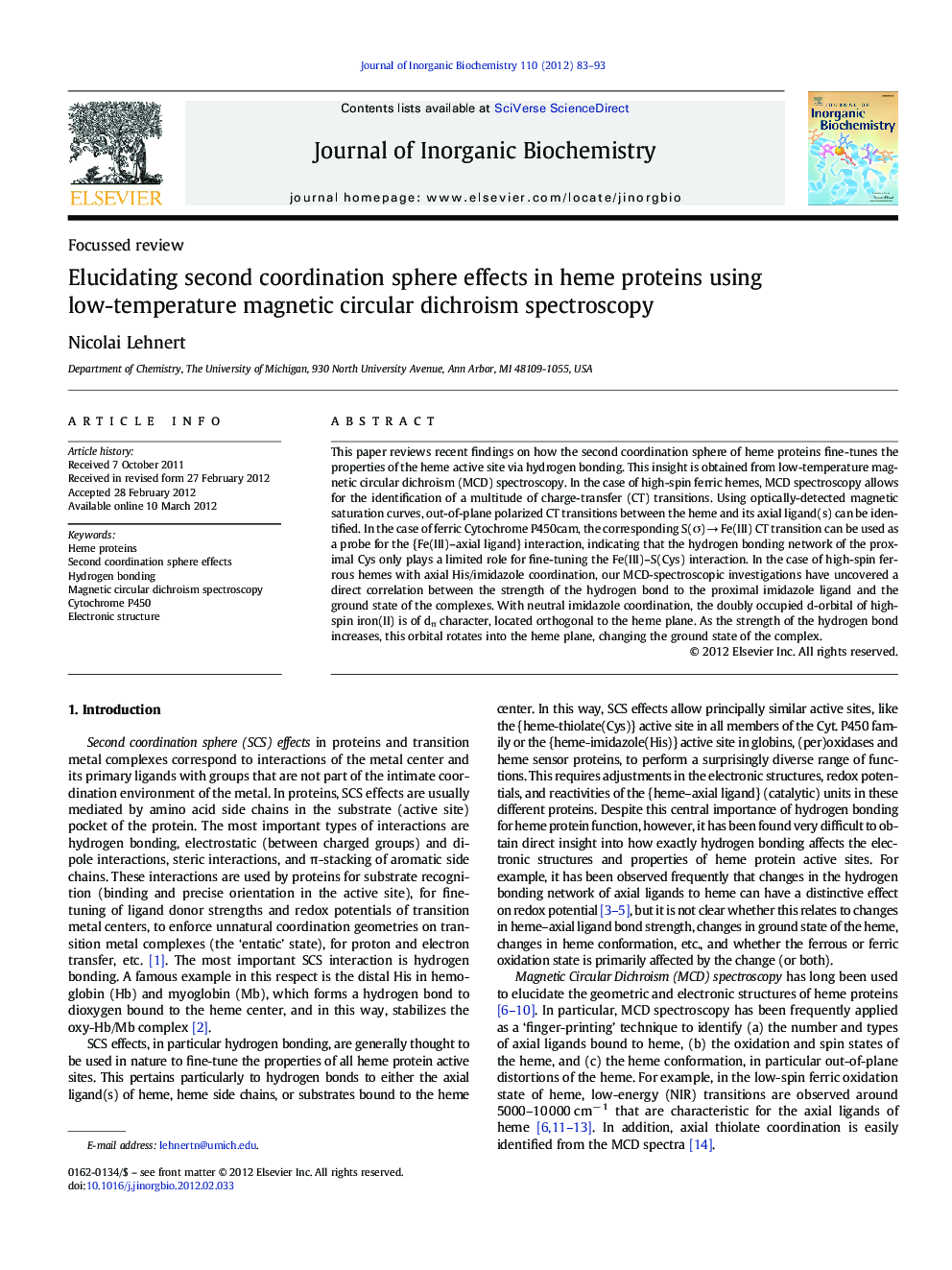| Article ID | Journal | Published Year | Pages | File Type |
|---|---|---|---|---|
| 1316527 | Journal of Inorganic Biochemistry | 2012 | 11 Pages |
This paper reviews recent findings on how the second coordination sphere of heme proteins fine-tunes the properties of the heme active site via hydrogen bonding. This insight is obtained from low-temperature magnetic circular dichroism (MCD) spectroscopy. In the case of high-spin ferric hemes, MCD spectroscopy allows for the identification of a multitude of charge-transfer (CT) transitions. Using optically-detected magnetic saturation curves, out-of-plane polarized CT transitions between the heme and its axial ligand(s) can be identified. In the case of ferric Cytochrome P450cam, the corresponding S(σ) → Fe(III) CT transition can be used as a probe for the {Fe(III)–axial ligand} interaction, indicating that the hydrogen bonding network of the proximal Cys only plays a limited role for fine-tuning the Fe(III)–S(Cys) interaction. In the case of high-spin ferrous hemes with axial His/imidazole coordination, our MCD-spectroscopic investigations have uncovered a direct correlation between the strength of the hydrogen bond to the proximal imidazole ligand and the ground state of the complexes. With neutral imidazole coordination, the doubly occupied d-orbital of high-spin iron(II) is of dπ character, located orthogonal to the heme plane. As the strength of the hydrogen bond increases, this orbital rotates into the heme plane, changing the ground state of the complex.
Graphical abstractThis review shows how low-temperature magnetic circular dichroism (MCD) spectroscopy in conjunction with density functional theory calculations can be used to investigate how second coordination sphere effects influence heme-axial ligand interactions and electronic ground states in heme proteins.Figure optionsDownload full-size imageDownload as PowerPoint slide
